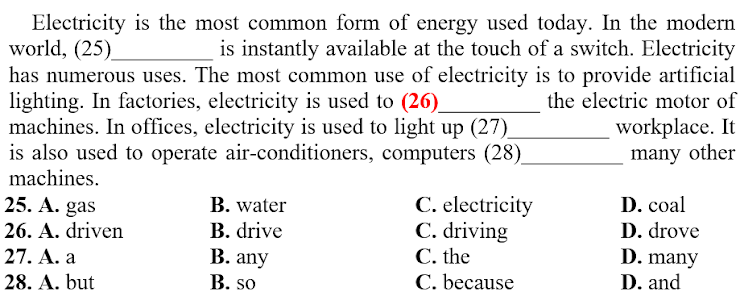Read the following passage and mark the letter A, B, C, or D on your answer sheet to indicate the correct word or phrase that best fits each of the numbered blanks from 31 to 35.
In 1830, there were under 100 miles of public railway in Britain. Yet within 20 years, this figure had grown to more than 5000 miles. By the end of the century, almost enough rail track to encircle the world covered this small island, (31) __________ the nature of travel forever and contributing to the industrial revolution that changed the course of history in many parts of the world.
Wherever railways were introduced, economic and social progress quickly (32) __________ In a single day, rail passengers could travel hundreds of miles, cutting previous journey times by huge margins and bringing rapid travel within the (33) __________ of ordinary people. Previously, many people had never ventured beyond the outskirts of their town and villages. The railway brought them greater freedom and enlightenment.
In the 19th century, the railway in Britain represented something more than just the business of carrying goods and passengers. Trains were associated with romance, adventure and, frequently, (34) __________ luxury. But the railways did more than revolutionize travel; they also left a distinctive and permanent mark on the British landscape. Whole towns and industrial centers (35) __________ up around major rail junctions, monumental bridges and viaducts crossed rivers and valleys and the railway stations themselves became desirable places to spend time between journeys
Điền ô số 33
A. reach
B. capacity
C. facility
D. hold


















